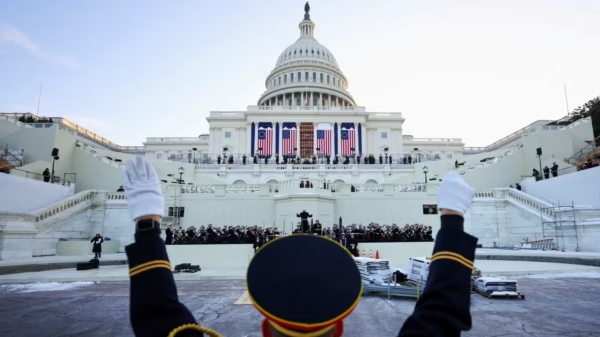Trump’s Directive to Release California Dam Water Sparks Controversy
Executive Order Mandates Water Release
In late January 2025, President Donald Trump issued an executive order directing the U.S. Army Corps of Engineers to release substantial amounts of water from two reservoirs in Tulare County, California: Terminus Dam at Lake Kaweah and Schafer Dam at Lake Success. The administration stated that the release aimed to provide water resources to combat wildfires in Los Angeles.
Farmers Express Concerns Over Water Loss
Local farmers in Central California have voiced significant concerns regarding the water release. They argue that the water stored in these reservoirs is crucial for irrigation during the upcoming dry summer months. The sudden release, they claim, jeopardizes their agricultural operations and threatens crop yields.
Logistical Challenges in Water Distribution
Experts have highlighted logistical challenges associated with the water release. Peter Gleick, a water scientist, noted that the water from these reservoirs cannot be easily transported to Los Angeles due to infrastructural limitations. He emphasized that the regions are not connected in a manner that would facilitate such a transfer.
Environmentalists Raise Ecological Concerns
Environmental groups have raised concerns about the potential ecological impact of the water release. They warn that altering the natural flow of rivers can disrupt local ecosystems, harm wildlife habitats, and affect water quality downstream. The long-term environmental consequences remain uncertain.
Political Tensions Escalate
The directive has intensified existing political tensions between the federal government and California state officials. Governor Gavin Newsom criticized the move, stating that it undermines state water management policies and disregards the needs of local communities. This incident adds to a series of disputes over environmental and resource management issues.
Legal Challenges Anticipated
Legal experts anticipate potential lawsuits challenging the executive order. They argue that the federal government may have overstepped its authority, infringing upon states’ rights to manage their natural resources. The outcome of such legal battles could set significant precedents for federal-state relations.
Impact on Local Water Agencies
Local water agencies are grappling with the implications of the sudden water release. They are assessing how the reduced reservoir levels will affect their ability to supply water to agricultural and residential users. Contingency plans are being developed to mitigate potential shortages.
Historical Context of Water Management Conflicts
California has a long history of conflicts over water management, often referred to as “water wars.” This latest incident is reminiscent of past disputes where federal interventions clashed with state and local interests, highlighting the ongoing challenges in balancing resource allocation.
Economic Implications for Agriculture
The agricultural sector, a significant contributor to California’s economy, faces potential economic repercussions due to the water release. Farmers fear that water scarcity during critical growing periods could lead to reduced crop yields, financial losses, and increased prices for consumers.
Public Response and Protests
The executive order has sparked public protests, with community members and activists rallying against the decision. Demonstrators are calling for the protection of local water resources and greater consideration of environmental impacts in policy decisions.
Media Coverage and Public Perception
Media outlets nationwide have extensively covered the controversy, shaping public perception of the administration’s environmental policies. The narrative varies, with some outlets emphasizing the need for wildfire mitigation and others highlighting the adverse effects on agriculture and local communities.
Expert Opinions on Water Resource Management
Hydrologists and environmental scientists have weighed in on the issue, advocating for a more integrated approach to water resource management. They suggest that collaborative efforts between federal, state, and local entities are essential to develop sustainable solutions that address both environmental and human needs.
Alternative Strategies for Wildfire Mitigation
Critics of the water release argue that there are more effective strategies for wildfire mitigation. These include controlled burns, forest management practices, and investment in firefighting infrastructure. They contend that water releases may have limited impact on fire suppression efforts.
Future of California’s Water Policies
This incident has prompted a reevaluation of California’s water policies. Policymakers are considering reforms to enhance water conservation, improve infrastructure, and ensure equitable distribution among agricultural, residential, and environmental stakeholders.
Community Initiatives for Water Conservation
In response to the controversy, local communities are initiating water conservation programs. These grassroots efforts aim to reduce water waste, promote sustainable usage, and raise awareness about the importance of preserving this vital resource.
Long-Term Environmental Monitoring
Environmental organizations plan to monitor the long-term effects of the water release on local ecosystems. Studies will focus on changes in riverine habitats, species populations, and water quality to inform future policy decisions.
Calls for Policy Transparency
Advocacy groups are calling for greater transparency in policy decisions related to natural resources. They demand that government actions be based on scientific evidence and include input from affected communities to ensure balanced and informed outcomes.


































